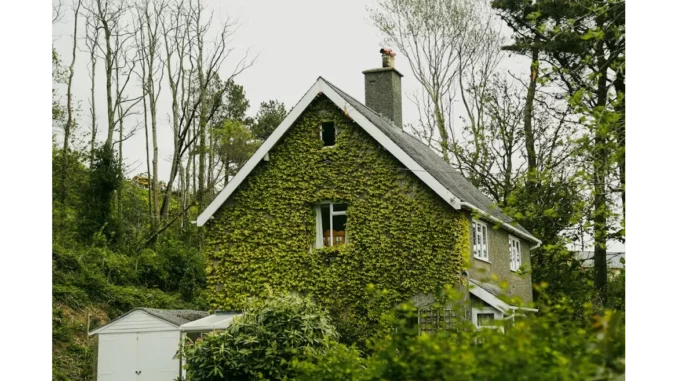
When it comes to sustainable building practices, few certifications carry as much weight as BREEAM. To delve deeper into its benefits, I recently had the pleasure of sitting down with Emily Carter, a senior project manager at GreenBuild Solutions, a company renowned for its commitment to sustainable development. Emily’s insights provide a compelling case for why investing in BREEAM certification not only enhances the sustainability of a project but also boosts its marketability and compliance with evolving regulations.
Focus360 Energy: property compliance services – pre-planning to post-construction. Learn more.
Our conversation took place in a sunlit office overlooking an ongoing construction site, a fitting backdrop for a discussion on green building practices. Emily’s passion for sustainability was evident from the get-go. She began by explaining the core ethos of BREEAM—Building Research Establishment Environmental Assessment Method. “BREEAM isn’t just a tick-box exercise,” she said, leaning forward. “It’s a comprehensive approach to ensuring that every aspect of a building is designed and managed with sustainability in mind.”
The Sustainability Advantage
One of the primary benefits of BREEAM certification, Emily noted, is its rigorous focus on sustainability. “We’re talking about a holistic view of sustainability—energy efficiency, water usage, health and wellbeing, pollution control, materials, waste management, and ecology,” she elaborated. Each of these categories is meticulously assessed, ensuring that certified buildings meet high environmental standards.
Emily recounted a recent project—a multi-use development in the heart of the city—that aimed for BREEAM Excellent certification. “We incorporated green roofs, rainwater harvesting systems, and advanced ventilation systems to improve indoor air quality,” she explained. “These features not only reduced the building’s environmental impact but also created a healthier living and working environment for occupants.”
Marketability and Value
Beyond the sustainability angle, Emily was keen to highlight how BREEAM certification enhances the marketability of a project. “In today’s market, there’s a growing demand for green buildings,” she said. “Tenants and buyers are increasingly looking for properties that align with their own sustainability values.”
Emily pointed out that the BREEAM certification serves as a mark of quality and trust. “When people see that BREEAM badge, they know they’re getting a building that’s been held to the highest environmental standards,” she said. This trust translates into real financial benefits. “Projects with BREEAM certification often see higher occupancy rates and can command premium rents or sale prices,” she added. “It’s a win-win situation.”
Compliance with Evolving Regulations
Regulatory compliance is another significant aspect where BREEAM certification proves invaluable. “Building regulations are becoming increasingly stringent, particularly concerning energy performance and sustainability,” Emily explained. “BREEAM certification helps ensure that our projects not only meet current standards but are also future-proofed against upcoming regulations.”
She cited an example from her experience where a commercial development project faced potential delays due to changing energy performance regulations. “Because we were pursuing BREEAM certification, we had already incorporated many of the required measures,” she said. “This put us ahead of the curve and saved us considerable time and expense in the long run.”
Challenges and Rewards
Of course, achieving BREEAM certification is not without its challenges. Emily was candid about the complexities involved. “It requires a significant investment of time and resources,” she admitted. “The process is thorough, and it demands a high level of commitment from everyone involved—from architects and engineers to contractors and facility managers.”
However, the rewards far outweigh the challenges. “The sense of accomplishment when you achieve that certification is immense,” Emily said with a smile. “You know that you’ve created something that not only meets but exceeds environmental standards. It’s incredibly fulfilling.”
The Future of Sustainable Building
As our discussion drew to a close, Emily offered some thoughts on the future of sustainable building practices. “I think we’re going to see even greater emphasis on sustainability in the coming years,” she predicted. “BREEAM and other similar certifications will become increasingly important as we strive to mitigate the impacts of climate change.”
She also highlighted the role of innovation in driving sustainability forward. “We’re constantly exploring new technologies and materials to improve the environmental performance of our projects,” she said. “It’s an exciting time to be in this field.”
Final Thoughts
Investing in BREEAM certification is a strategic decision that yields multiple benefits. It ensures that projects are designed and built with a strong focus on sustainability, enhances marketability, and helps navigate the complexities of evolving regulations. As Emily Carter’s experiences vividly illustrate, the journey to achieving BREEAM certification, though challenging, is ultimately rewarding and positions projects for success in the competitive real estate market.
Through our conversation, it became clear that BREEAM certification is more than just a credential—it’s a commitment to creating a more sustainable and resilient built environment. As we move forward, embracing such practices will be crucial in addressing the environmental challenges of our time.
Lewis Davis


Be the first to comment